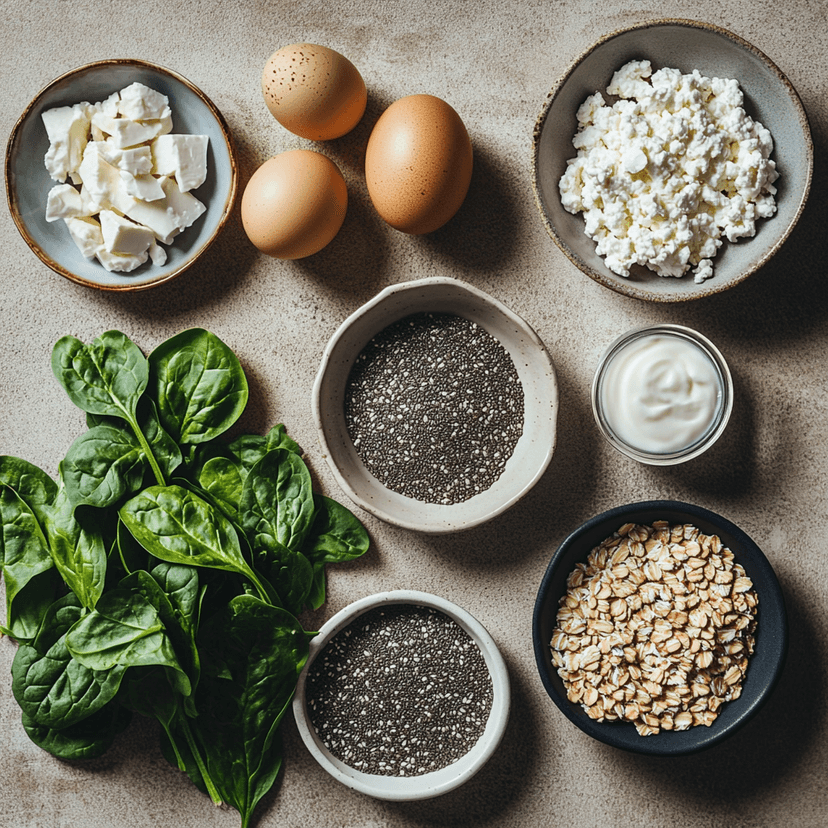3 Perfect Sample Nutrition Days in 1: Simplify Eating, Support Your Goals

Eating with structure shouldn’t feel like a full-time job. But between tracking, decision fatigue, second-guessing what’s “healthy,” and wondering if you’re eating too much—or not enough—it’s easy to feel stuck. The truth is, most people don’t need more extreme rules or rigid meal plans. They need a framework that simplifies decisions and flexes with real life.
That’s exactly what these three sample days are built to give you: a clear, balanced structure—built by the team at Alter using performance nutrition and behavior science—to help you eat in a way that supports fat loss, energy, and long-term sustainability without overcomplication.
Choosing Your Daily Calorie Target: Goal Weight ×12 vs. ×15
At the heart of any sustainable nutrition approach is understanding how much to eat—and why. A widely accepted method for estimating calorie intake is to multiply your goal body weight by either 12 or 15.
Goal weight ×12: This multiplier is commonly used as a conservative estimate to promote fat loss through a modest daily calorie deficit. It’s effective for most people trying to reduce body fat without crashing energy or over-restricting food intake.
Goal weight ×15: This method works well for maintenance or performance goals. It’s based on research that suggests moderately active individuals need approximately 15 calories per pound of body weight to support basic activity, recovery, and metabolic health.
Neither multiplier is "better"—they’re simply different tools. At Alter, we guide users through both options depending on goals, training load, and phase of progress. You can also split the difference with 13 or 14 and monitor how your body responds.
Protein, Fats, and Carbs: What Actually Moves the Needle
Once you know your calorie range, the next step is dividing it up effectively.
Protein: Aim for 0.7–1.0g per pound of goal body weight. This supports muscle preservation, satiety, and metabolic health.
Fats: Keep 25–35% of your intake from high-quality sources like avocado, olive oil, nuts, seeds, and fatty fish. Fats help regulate hormones, promote recovery, and support overall energy availability.
Carbs: These remain flexible. Shift your carb intake based on your schedule and energy needs. More active mornings may call for higher-carb breakfasts; recovery days might lean lower.
A Day in the Life: 3 Sample Nutrition Days (Omnivore, Vegetarian, Vegan)
These sample days are built for flexibility. All meals fall in the 500–600 calorie range, delivering strong macros while keeping things simple and consistent.
Morning – Start Strong
Omnivore: Greek yogurt parfait 6 oz unsweetened Greek yogurt, 1 tbsp chia seeds, ¼ cup mixed berries, sprinkle of almonds ~250 calories | 20g protein | 10g fat
Vegetarian: Avocado toast 1 slice whole-grain toast, ¼ avocado, 1 boiled egg, chili flakes ~300 calories | 15g protein | 12g fat
Vegan: Protein smoothie 1 scoop plant-based protein, ½ cup almond milk, ¼ avocado, handful of spinach, ¼ cup berries ~280 calories | 25g protein | 8g fat
Lunch – The Foundation Meal
Omnivore: Grilled chicken salad 4 oz grilled chicken, mixed greens, tomatoes, cucumbers, 1 tbsp olive oil + lemon ~400 calories | 35g protein | 15g fat
Vegetarian: Lentil + feta salad 1 cup cooked lentils, ¼ cup feta, spinach, tomatoes, balsamic vinaigrette ~420 calories | 28g protein | 12g fat
Vegan: Chickpea + quinoa bowl 1 cup quinoa, ½ cup chickpeas, roasted zucchini + peppers, tahini dressing ~450 calories | 24g protein | 14g fat
Snack – Optional Protein Boost
Omnivore: Turkey jerky ~150 calories | 15–20g protein
Vegetarian: ½ cup cottage cheese + cinnamon ~120 calories | 12g protein | 5g fat
Vegan: ½ cup roasted edamame ~140 calories | 14g protein | 4g fat
Dinner – Flexible and Balanced
Omnivore: Grilled salmon with wild rice + Brussels sprouts 4 oz salmon, ½ cup wild rice, roasted sprouts ~500 calories | 35g protein | 16g fat
Vegetarian: Tofu stir-fry 4 oz tofu, broccoli, snap peas, carrots, soy-ginger sauce, brown rice ~480 calories | 28g protein | 12g fat
Vegan: Sweet potato + black bean tacos 2 corn tortillas, mashed sweet potato, ½ cup black beans, lettuce, salsa ~460 calories | 22g protein | 10g fat
Customizing Your Days
Need more protein? Add 2 extra ounces of chicken or tofu, or toss a scoop of protein into your smoothie. Want fewer carbs on a rest day? Reduce rice or quinoa and increase greens. Want to shift carbs earlier in the day? Just swap your meal order. These aren’t hard rules—they’re guardrails that support flexibility.
The law of averages still wins. You don’t need perfect numbers every day. You need consistency across weeks. That’s what drives results.
Why This Works
This isn’t a crash plan or short-term detox—it’s a repeatable framework grounded in exercise science, habit formation, and metabolic health. At Alter, we use this system to help you:
Understand your intake needs based on your goals and activity
Build meals that fuel your body, without stress
Make consistent progress without restriction or confusion
Most importantly, we give you a structure that’s flexible enough to live your life—and strong enough to move you forward.
References
Hall, K. D., & Heymsfield, S. B. (2009). Calorie for calorie, dietary fat restriction results in more body fat loss than carbohydrate restriction in people with obesity. Cell Metabolism, 22(3), 427–436. https://doi.org/10.1016/j.cmet.2015.07.021
Institute of Medicine (US) Panel on Macronutrients. (2005). Dietary Reference Intakes for Energy, Carbohydrate, Fiber, Fat, Fatty Acids, Cholesterol, Protein, and Amino Acids. National Academies Press (US). https://www.ncbi.nlm.nih.gov/books/NBK56068/
Weigle, D. S., et al. (2005). A high-protein diet induces sustained reductions in appetite, ad libitum caloric intake, and body weight despite compensatory changes in diurnal plasma leptin and ghrelin concentrations. The American Journal of Clinical Nutrition, 82(1), 41–48. https://doi.org/10.1093/ajcn/82.1.41

